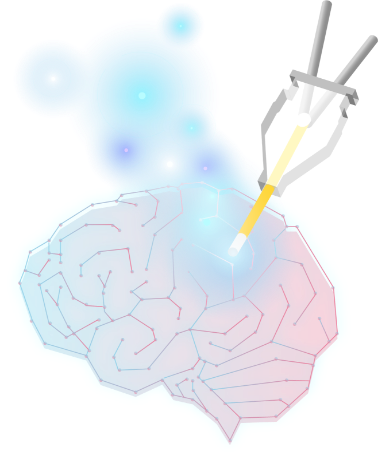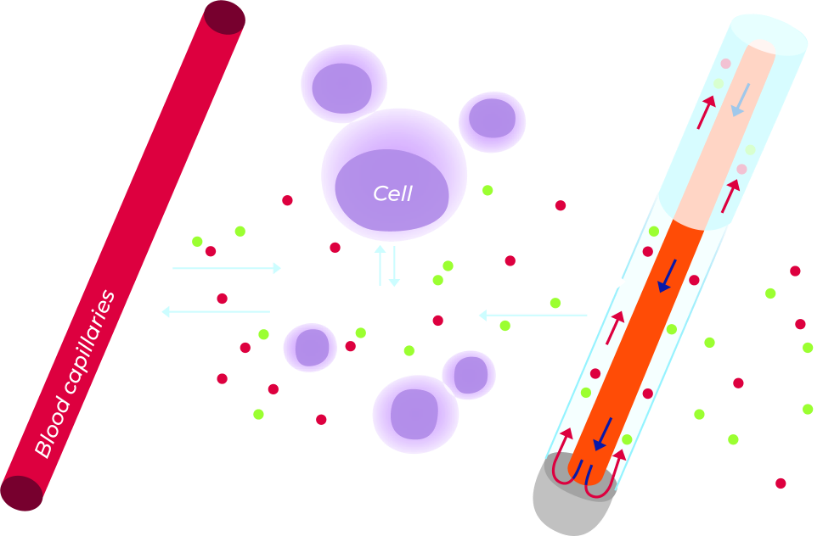About Microdialysis
What microdialysis brings
- Sampling of all soluble molecules in interstitial/extracellular fluid
- Measurement of basal levels of neurotransmitters and their release levels upon stimulation
- Measurement of free drug levels in multiple compartments

Microdialysis is a minimally invasive technique that allows in vivo sampling of molecules released or produced in extracellular regions of tissues or organs in vivo. Combined with appropriate detection techniques and microdialysis, changes in tissue chemistry can be monitored over time, such as neurotransmitter release and reuptake, drug delivery, or energy metabolism in specific brain regions.
The outstanding capability of in vivo microdialysis is its ability to provide information on the unstimulated basal levels of extracellular neurotransmitters and their pharmacologically or physiologically stimulated release. This allows one to investigate the release and metabolism of neurotransmitters in the brain and the role of different receptor subtypes. In addition, microdialysis techniques provide comprehensive information on the dynamic changes in molecules involved in cell-to-cell communication and metabolism while maintaining physiological and behavioral function.

The principle of microdialysis sampling is molecular diffusion due to the concentration gradient that exists between two compartments separated by a membrane (the tissue/interstitial fluid compartment and the perfusate compartment within the microdialysis probe).
Thus, molecules can move in both directions, allowing simultaneous collection of endogenous compounds released into the brain microspace and, at the same time, local delivery of the drug to the sampled area via the probe. Microdialysis can also be used to monitor the kinetics of drug distribution and elimination at different sites, which is of particular interest for brain research because it allows the ability of drugs to cross the blood-brain barrier to be assessed.



